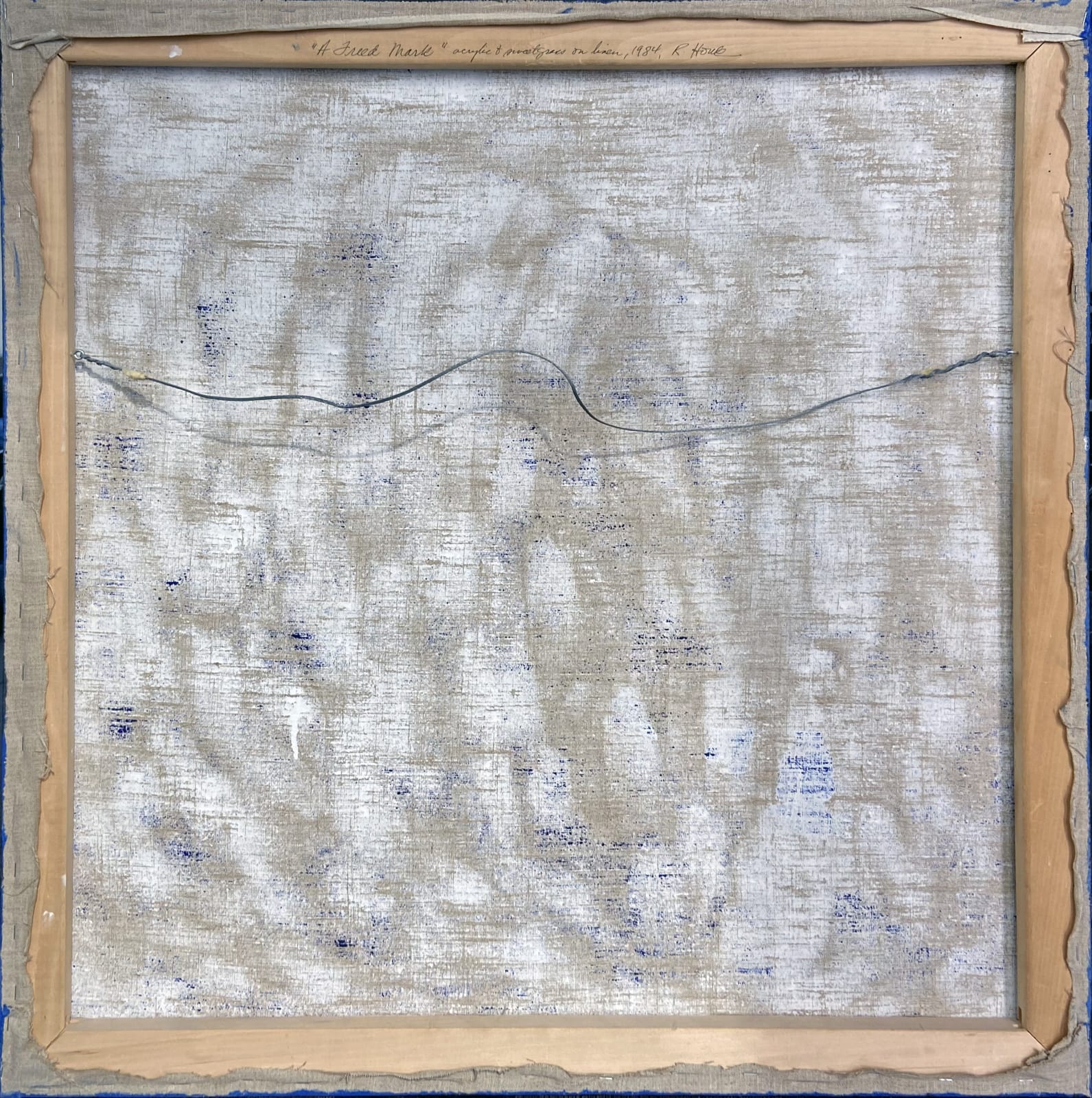-
Artworks
ROBERT HOULE, R.C.A. (1947-) NAHKAWININIWAK (SAULTEAUX / PLAINS OJIBWAY)
A Freed Mark, 1984mixed media (acrylic and sweetgrass) on linen, 30 x 30 in (76.2 x 76.2 cm)
signed, "Houle '84"
titled, inscribed, dated, and signed, '"A Freed Mark" acrylic and sweetgrass on linen, 1984, R. Houle." (verso, top stretcher).
LOT 122
ESTIMATE: $6,000 — $9,000A graduate of art and art history, broadly speaking, Robert Houle creates works that illustrate a complementary exchange between the artistic language and theories that inform Western art with Indigenous...A graduate of art and art history, broadly speaking, Robert Houle creates works that illustrate a complementary exchange between the artistic language and theories that inform Western art with Indigenous themes and motifs. The most apparent influence in the present work, in its painterly, hypnotic dialogues of pigment, is that of the Color Field Abstractionists, and, in particular, Barnett Newman. And, like Newman, who once explained that he “tried to make the title a metaphor that describes my feelings when I did the painting” (Hess, 1969, p. 54), the title of the present work by Houle provides us with an orienting description. Here, the colourful cosmos of his painted linen canvas is disrupted by two strands of grass, crossed to form an X shape. That this work was executed just one year after his seminal creation, Parfleches for the Last Supper (Winnipeg Art Gallery), suggests that we may understand A Freed Mark as Houle’s integration of Christian theology with Saulteaux spirituality. That the X or Chi, a shorthand for Christ, is composed of sweetgrass — a fragrant plant used in traditional Anishinabe medicinal and purification ceremonies — is perhaps an iteration of Houle’s attempt to combine these two opposing ideologies.
The inclusion of the sweetgrass produces not just an effect of poeticism but one of exciting tactility. Houle’s interest in the geometric Ojibwa designs published in Carrie A. Lyford’s book Ojibwa Crafts (1943) is well documented. Lyford also explains in her publication that sweetgrass was used on splints and bark baskets to provide decorative designs. Thus the literal disruption of the linen canvas — awash in its semi-automatic swaths of Houle’s sonorous palette of sable mauves and blacks, electric blues and pinks, and shimmering gold — are physical traces of a commodity that is central to Anishinabe decorative designs.
Literature: For illustrations and discussion of Houle’s Parfleches for the Last Supper series see Carol Podeworny, curator, Troubling Abstraction: Robert Houle (Hamilton: McMaster Museum of Art, 2007). See Thomas Hess, Barnett Newman, (New York: Walker and Company, 1969), p. 59. For further reading on Houle’s concepts of spirituality and other biographical information, see: Dorine Mignot, ed., Notion of Conflict: A Selection of Contemporary Canadian Art, exh. cat., (Amsterdam: Stedelijk Museum, 1995); Shirley Madill, Robert Houle: Life & Work, Art Canada Institute, Toronto, digital publication, 2018; For contemporaneous writings by the artist on Indigenous art and the Modern aesthetic see: Robert Houle. "The Emergence of a New Aesthetic Tradition." New Work by a New Generation (Regina, Saskatchewan: Norman Mackenzie Art Gallery, 1982).Provenance
Private Collection, Ottawa.
Join our mailing list
* denotes required fields
We will process the personal data you have supplied in accordance with our privacy policy (available on request). You can unsubscribe or change your preferences at any time by clicking the link in our emails.




